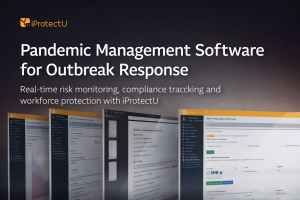Psychosocial Hazards in the Workplace
In the past, safety professionals have focused on protecting employees from physical injury, for example using harnesses when working at height, carrying out workstation assessments and ensuring machinery is guarded to protect operators’ hands from injury. While the physical safety of employees remains a priority, we can’t ignore the fact that psychosocial hazards have accounted for hundreds of thousands of annual cases of workplace illness in the UK in recent years.
Psychosocial hazards are aspects of work situations that may cause a stress response which can lead to psychological or physical harm. These hazards can negatively affect employee mental health, causing fatigue, stress, and burnout.
Psychosocial hazards stem from the way the job is designed, organised, managed and supervised. They also stem from the work equipment or the requirement to undertake duties in physically hazardous environments. Psychosocial hazards may also be attributed to social factors at work, social interactions and workplace relationships.
Common psychosocial hazards include lack of control over work tasks, tight deadlines, excessive workload, poor workplace culture, harassment and bullying, and unpredictable work hours.
Learning from the Australian approach
The Australian Code of Practice for Managing Psychosocial Hazards at Work is a guide which outlines practical steps surrounding the implementation of risk management processes. In guiding employers on the prevention and management of psychosocial hazards, the Code sets out six key areas, outlined below.
Leadership and workplace culture – Employers should visibly commit and provide tangible support to employees, including access to health management providers. They should be willing to listen, and avoid adopting a punitive approach when issues are raised.
Suitable work design – Employers should define job roles and provide resources so that employees can carry out tasks safely and effectively. It is important to review and monitor workloads.
Safe systems of work – Employers should implement task rotation, building adequate rest and recovery time into work activities. Working hours and shift patterns should also be assessed periodically.
Communication and consultation – It is important that employers encourage communication and feedback and carry out regular consultations with employees.
Information and training – Employers should provide employees with relevant information on tasks, including any associated psychosocial hazards. They should also inform employees of control measures and the reporting process, should a problem arise.
Workplace behaviour – Employers should model desired behaviour. They should foster a positive workplace culture and maintain fair and consistent implementation of policies/procedures.
It is crucial that employers adopt a risk management process, including eliminating or minimising psychosocial risks, so far as is reasonably practicable.
It is clear that psychological safety is a key component in achieving a positive and successful workplace culture.
Just like the Australian Code of Practice, empathetic leadership should be encouraged everywhere, where managers actively support employees’ mental health.









